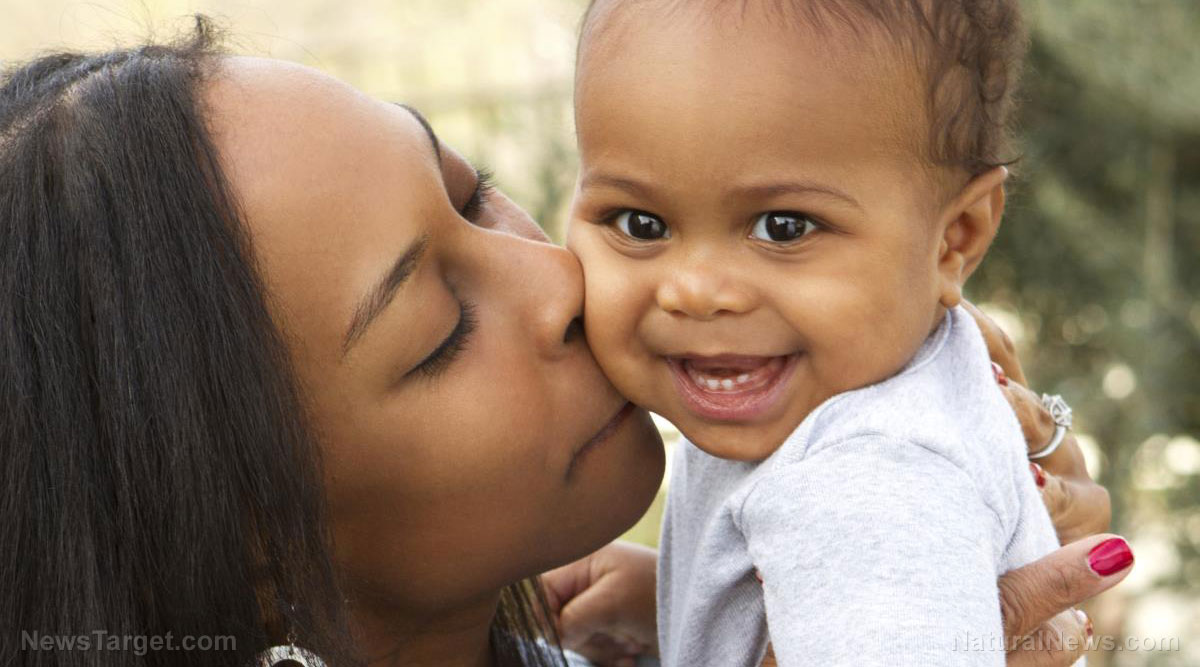Eye contact synchronizes brainwaves; this is how babies learn to communicate
12/18/2017 / By Zoey Sky

According to a recent study, eye contact between an infant and an adult helps their brainwaves “get in sync” which can also “support communication and learning.”
Researchers at the University of Cambridge have revealed that “when a parent and infant interact, various aspects of their behavior can synchronize,” such as their gaze, emotions, and heart rate. However, not much is known about whether their brain activity also synchronizes and what this could mean for communication between the two.
Brainwaves indicate the group-level activity of millions of neurons, and they are linked to the transfer of information between brain regions. Earlier research has revealed that when two adults converse, communication is improved if their brainwaves are synchronized.
Scientists from the Baby-LINC Lab at the University of Cambridge spearheaded a study to determine if infants can synchronize their brainwaves with adults too and if eye contact could improve their synchronicity. (Related: Unborn babies can recognize FACES from inside the womb.)
The team monitored the brainwave patterns of 36 infants, 17 for the first experiment and 19 for the second, via electroencephalography (EEG). EEG measures patterns of brain electrical activity via electrodes attached to a skullcap worn by both infants and adults. The researchers then compared the infants’ brain activity with that of an adult who sang nursery rhymes to them.
For the first experiment, the researchers determined that infants’ brainwaves were more synchronized to the adults’ when there is eye contact between the two. However, the greatest synchronizing effect took place when the adults’ head was turned away, but she was still looking directly at the infant. According to the researchers, this could be because the gaze seems “highly deliberate,” which sends a stronger signal to the infant that the adult wants to communicate with her.
For the second experiment, both infants and adults were more synchronized to each other’s brain activity after “mutual eye contact was established.” This happened even though the adult had visual confirmation of the infant’s location at all times. Meanwhile, infants were equally interested in keeping an eye on the adult even when she was looking at something else. This implies that brainwave synchronization doesn’t happen just because one sees a face or finds something interesting, but it is also about having a shared intention to communicate, said the researchers.
Dr. Victoria Leong, the lead author on the study, explains: “When the adult and infant are looking at each other, they are signaling their availability and intention to communicate with each other. We found that both adult and infant brains respond to a gaze signal by becoming more in sync with their partner. This mechanism could prepare parents and babies to communicate, by synchronizing when to speak and when to listen, which would also make learning more effective.”
Dr. Sam Wass, the last author on the study, concluded, “Our findings suggested eye gaze and vocalizations may both, somehow, play a role. But the brain synchrony we were observing was at such high time-scales – of three to nine oscillations per second – that we still need to figure out how exactly eye gaze and vocalizations create it.”
Tips for helping your baby learn how to talk
Babies learn as they grow older, but it won’t hurt if you try to lend them a helping hand through these tips to help them learn how to talk:
- Start talking to them early – Even though infants can’t fully comprehend what you’re saying, the part of their brain that responds to sound are well-developed by birth.
- Look for visual cues – Observe their gaze to see what catches their interest, and talk to them about it. Use some simple terms to describe what the object does or what it looks like.
- Read to them – Reading to infants to help them improve their vocabulary.
- Encourage conversations – Acknowledge an infant’s response, even if they’re just babbling, so they know how to keep a conversation going.
You can learn more about communication and learning at Mind.news.
Sources include:
Tagged Under: babies, brainwave patterns, brainwaves, communication, discoveries, eye contact, neurology, research, science, weird science




















